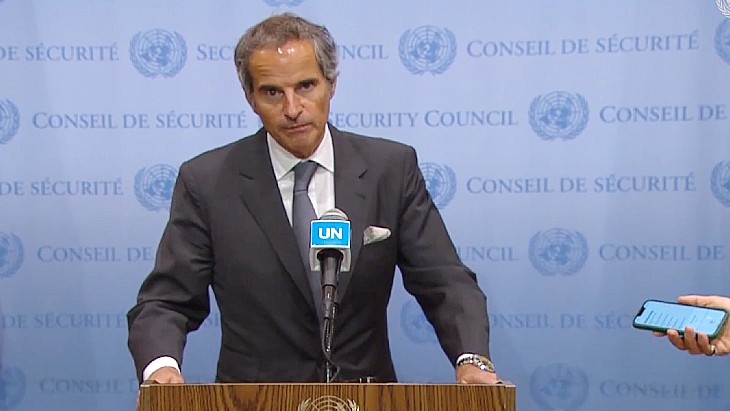Chain of command
Zaporizhzhia has been under Russian military control since early March, but has continued to be operated by its Ukrainian staff. However, since Russia's president said his country was annexing Zaporizhzhia Oblast and created a new Russian company to run the plant more Russian technicians have started working there. Ukraine has rejected Russia's annexation announcement, and insists it continues to operate and regulate the plant.
This has led to safety concerns regarding confusion about the chain of command, said the IAEA in its update on Thursday. As an example, the agency said that "senior Ukrainian operating staff had planned to restart unit 5 but it currently remains in a hot shutdown mode as Russian officials have not agreed to start it up again".
"In the meantime, unit 5 is providing steam for site operations," said the IAEA, "but plant staff state that another unit will also need to be placed in hot shutdown to supply all the site’s needs in the future. The site is awaiting permission from Moscow to undertake this."
Safeguards
International attention has also been focused on ensuring radioactive materials in Ukraine are properly stored and accounted for after Russia raised official allegations that Ukraine is preparing a 'dirty bomb', something Ukraine denies.
Officially known as a radiological dispersal device (RDD), these are explosive devices laced with radioactive material which would be spread on detonation. While the primary risk from RDDs remains the explosion itself, they present an additional risk of radiological contamination to people nearby at the time of detonation and add a multiplier effect of fear and disruption to wider society. Ukraine denies any intention to do this, and responded by inviting the IAEA to visit the two specific facilities named by Russia in its accusations to perform safeguards verifications that all radioactive material is accounted for. The facilities are the Institute of Nuclear Research of the National Academy of Sciences of Ukraine near Kyiv and the State Enterprise 'Eastern Mining and Processing Plant' at which radioactive waste is stored.
Speaking in New York, IAEA Director General Rafael Mariano Grossi said inspection teams are being sent to the two facilities named by Russia, with Ukraine saying this was the best way to dispel any doubt that the claims were false. "The purpose of this week’s safeguards visits is to detect any possible undeclared nuclear activities and materials related to the development of 'dirty bombs'," said Grossi. He said that the IAEA "inspected one of the two locations a month ago and no undeclared nuclear activities or materials were found there". With the war continuing and with Russia targeting parts of Ukraine's energy infrastructure, Grossi said that IAEA staff members will soon be stationed at the Khmelnitsky, Rivne, South Ukraine and Chernobyl nuclear power plant sites in addition to those already stationed at Zaporizhzhia.
The results of the coming inspections will be reported in line with IAEA's normal practice with results coming within days of inspectors' arrival, said Grossi, adding that "knowing the interest and urgency of this matter, the agency will also provide our conclusions to the IAEA Board of Governors and immediately after to the public”.
In a parallel development, construction work is taking place at the dry used fuel storage facility at Zaporizhzhia, which Energoatom said violates the site licence. In its statement, the IAEA acknowledged it was informed of this work on 14 October and noted that it has access to the facility for safeguards purposes. Russia's stated aim is to upgrade physical protection at the facility, the agency said.
Protection Zone
Efforts to establish a mutually recognised safe zone free from fighting around the plant continue, and Grossi said he was disappointed it has not happened yet, despite high level talks in Ukraine and Russia. On 27 October, Grossi said the talks were "making progress although not as fast as I would like".
Earlier this month, Grossi told Argentine newspaper La Nacion that both countries thought the concept of a safety zone was feasible.
External power
Work is continuing to bolster Zaporizhzhia's external power supply, which stands at one 750 kV external power line, compared with the four it had before the conflict. Earlier this month, the plant’s connection to the 750 kV line was cut three times in ten days, forcing it to use backup diesel generators, with the last such power loss occurring on 17 October.





_82983.jpg)
_34792.jpg)
_16403_79272.jpg)


_76087_55556.jpg)



